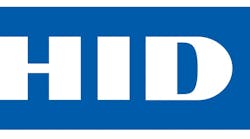Wide Array of Cloud-Based Technologies Accelerate Access Options
Cloud technologies are driving the next round of evolution in access control, creating the opportunity for new work experiences that can be accessed through people’s mobile phones and other devices, while also making buildings much smarter and more data-driven places. Cloud-based access-control platforms will ensure identity-aware, seamless and more consistent service delivery and user experiences while improving how identity solutions are delivered. They will provide the backbone for quickly adding complementary applications, use cases, and emerging permission-based transaction capabilities. They also will fuel new, more flexible subscription models that will be especially valuable in co-working and multi-tenant applications.
New Opportunities in a More Connected World
The pace of innovation will accelerate with greater adoption of mobile identities and as today’s installed base of millions of physical access control system (PACS) readers, controllers, panels and locks, worldwide, are connected to the cloud and IoT and married with location services capabilities. Security executives will have many more options for workplace optimization as these connections create a common cloud platform upon which the industry can develop a growing range of new trusted identity solutions.
Many universities and co-working spaces are already moving to “mobile-only” access-control system models to realize the benefits of integrating numerous applications into a unified mobile experience. Cloud-based platforms are also helping to solve the challenge of bridging biometrics and access control, which requires a trusted platform for combining accessibility and data protection in a connected environment. A secured and connected cloud architecture also creates the opportunity to remotely manage all readers and users across tasks ranging from onboarding to template loading and enrollment for supported authentication modes.
Another opportunity with cloud platforms is to simplify the task of adding secure print, virtual photo ID, vending and other access control use cases and emerging permission-based transaction capabilities, as needed. These platforms also provide a much more flexible way to upgrade a security infrastructure with capabilities like location services that improve maintenance, increase efficiency and squeeze more value from an organization’s investments.
One of the biggest benefits of cloud-based platforms is the opportunity for more flexible access-control service subscription models. An example of this is mobile ID issuance. Organizations can move away from a product-based mode and instead have a service provider manage all the tasks related to mobile ID replenishment when smartphones are lost or need replacement. This simplifies the provisioning process while creating the potential to further streamline forecasting, budgeting, and reporting. When looking for a service provider to deliver this capability, organizations will need to make sure that mobile ID subscription licenses can be transferred across all employees, and administrators can register multiple mobile IDs across multiple devices without having to pay any additional costs.
The subscription service model is already available with cloud-based ID card issuance platforms. Users can optionally lease hardware, software and other resources and bundle their costs into a service that is billed on an annual or monthly-installment basis. This cuts many layers of program costs while making it easier for administrators to accommodate future technology capabilities or changing volume demands.
Finally, cloud-based access control will enable the convenience of mobile apps to be combined with the power of insights derived from data analytics. Both location services and access control devices that are connected throughout the workplace will fuel valuable insights for achieving more intuitive and seamless service delivery, better workflow planning, simplified regulatory compliance, streamlined remote hardware configuration, and predictive access control system maintenance capabilities.
What to Expect Next
First, millions of installed physical access control devices will soon become a global cloud platform for trusted workplace innovation. IoT functionality will be embedded in access control panels as app extensions to connect them to cloud services. With these connections, access control systems will also be able to deliver real-time data to the cloud -- a key requirement for enabling remote diagnostics and a more predictive approach to functions like system maintenance and risk mitigation. This will make it easier, for instance, to manage access control reader configurations and firmware updates. It will also improve maintenance by making it possible to perform remote inspections.
Cloud connections will also enable organizations to more tightly integrate access control systems with their advanced smart building solutions. An example is cloud-based monitoring applications whose analytics capabilities are used to proactively identify and preempt potential system failures. These applications can also be used to monitor secure connections between access control peripherals, and to prompt firmware updates when there are potential cyber threats that must be addressed and mitigated.
As today’s installed physical access control devices are transformed into a global cloud platform, the path from product design to deployment will accelerate. Solutions will be supported by software developer kits (SDKs) and open application programming interfaces (APIs), spurring innovation and fueling more product and implementation choices – not just from traditional physical and IT security integrators, but also from many new players in what will be a richer and more vibrant developer community. Developers will no longer have to create an entire vertically integrated solution, which is good news for organizations that want an easier way to select and deploy solutions. The new model will be an app experience that is simply layered on top of the existing access control infrastructure.
Expect to see many new types of access control solutions. What were previously separate solutions for security and workplace optimization will now come together to reflect the simplicity, scalability, and universality of mobile apps. Solutions will be downloadable anywhere across a global ecosystem in the cloud and IoT that consists of millions of compatible physical access control system endpoints.
Early Examples
One of the first places where cloud platforms are being used in this way is the co-working industry. Solutions here are enabling building occupants to access facilities, book desks, private offices and meeting rooms with their smartphones, and then unlock them when they arrive.
The Deskopolitan office building in Paris provides an early example of the benefits of this approach. The facility serves entrepreneurs who need professional, reliable working spaces where they can create, run and grow their businesses. HID Mobile Access is the cloud-based solution that Deskopolitan uses to deliver this experience, enabling occupants to conveniently and securely access the co-working campus. The solution expands how occupants and tenants engage, interact and work in Deskopolitan’s more intelligent workspaces while giving the company an easy way to provision or revoke mobile IDs. This streamlines management without compromising security.
Another company that has taken this route with mobile IDs is the international property management group Skanska. The company uses the same technology for secure access throughout its new office complex in Warsaw. This enables the company to integrate all of its building applications into one seamless mobile experience including secure access to its parking garage and virtual reception system as well as its offices and various other IoT-based capabilities. With nothing but their smartphone, the company’s employees and their guests move throughout the building and into restricted areas where they have been granted access rights.
This cloud-based mobile access model is also valuable in more traditional multi-tenant facilities. An example of a solution for this application is the Honeywell Vector Occupant App, which combines mobile IDs with a cloud platform to give building occupants card-free secure access to a single area of a building, an entire facility or multiple locations around the globe. In another example, HID Global partner Datawatch Systems is using mobile IDs to transform the tenant experience across numerous U.S. high-rises and create better ways for property management companies and tenants to interact with buildings. The Datawatch system can also be used to analyze HVAC load requirements based on when someone enters or exits a suite or common area, adjust temperature settings, and turn off lights when the last person leaves.
Accelerating Innovation
Trusted, cloud-connected solutions that take advantage of an ecosystem of millions of readers and other devices, applications and trusted mobile IDs will give organizations greater flexibility to improve workplace efficiency, enhance security and scale their security infrastructure as they grow.
They also will have much more information about how their buildings are being used, creating new opportunities for workplace optimization and valuable capabilities like providing wayfinding assistance at large campuses. They will be better positioned to get the most out of their physical access control investments. As they grow, they can more easily scale their security infrastructure, building on a cloud foundation to add new and emerging technologies while also making it easier to deploy, manage and use new applications and services.
Organizations also will have a much broader range of choices. The simplified development environment of cloud-based solutions will accelerate innovation and usher in a host of new app experiences that can be added on top of the existing access control infrastructure. There will also be the option of flexible service subscription models for access control services, and the opportunity for transformative user experiences as organizations gain the tools and capabilities to look at workplace design and building services in new and exciting ways.
About the author: Hilding Arrehed is the Vice President Cloud Services and Physical Access Control for HID Global.




